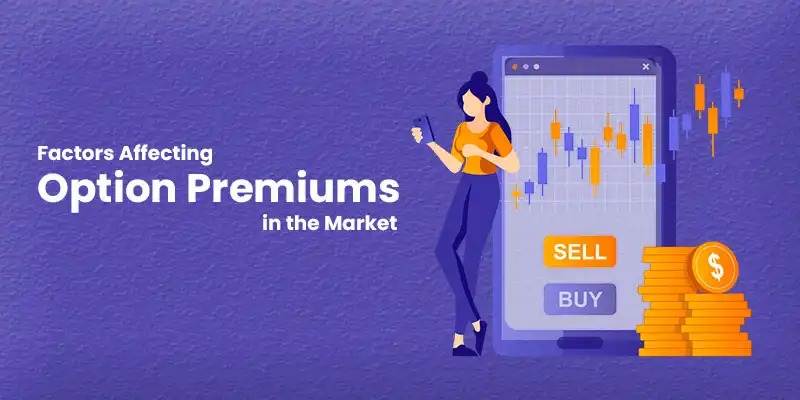Options trading is common among investors in the derivatives market for both speculative and hedging purposes. Knowing the premium is absolutely fundamental in options trading. It’s the amount you spend to buy an option contract. Several factors influence option premiums in the Indian derivatives market. This article explains the main factors that affect price. So read on!
Contents
- What Is an Option Premium
- Factors That Impact Option Premiums
- Intrinsic Value
- Time to Expiry
- Volatility
- Interest Rates
- Dividends and Corporate Actions
- Demand and Supply Dynamics
- Conclusion
- FAQs
What Is an Option Premium
Though they are not obliged to do so, the option premium is the sum the buyer pays the seller for deciding to purchase or sell an object at a specified price. The premium changes based on different factors that depend on market situations and the object’s qualities.
Factors That Impact Option Premiums
The following factors impact the prices of option premiums:
Intrinsic Value:
An option’s intrinsic value is the difference between its strike price and the object’s current price.
- Call Option: Intrinsic value = Current price of the object – Strike price (if positive).
- Put Option: Intrinsic value = Strike price – Current price of the object (if positive).
The term “out of the money” options refers to options with no intrinsic value. This means the entire premium comes from extrinsic value.
Time to Expiry:
A significant factor influencing the option premium is the time until expiration. Longer periods can lead to more changes in the price of the base object. This makes it more likely for the option to be successful. This results in typically larger premiums for options with longer maturities.
In India, options contracts for markets including Nifty and Bank Nifty can expire weekly or monthly. Longer periods usually have higher premiums.
Also Read: 10 Essential Terms Every Option Trader Must Know
Volatility:
Volatility indicates the extent to which an asset’s price swings. Higher volatility may impact option pricing due to increased market uncertainty. The option premium increases as a result.
Suggested or understood without being directly stated. The volatility significantly impacts premiums, representing market estimates of future volatility. In India, events like RBI policy statements or company reports can increase implied volatility, which affects option prices.
Interest Rates:
Interest rates influence option premiums in a subtle but significant way. Rate changes affect how much it costs to hold an asset, which is included in price models. For example, call options usually become more valuable when interest rates go up, while put options generally become less valuable.
This connection is more noticeable in India when the Reserve Bank of India changes its policy rates.
Dividends and Corporate Actions:
Expected payouts and company moves like bonuses or stock splits can affect premiums for stock options. Dividends usually cause call options to become cheaper and put options to become more expensive because the stock price might fall after a dividend is paid.
Indian stock options are significantly affected by these events, and traders usually consider these payouts when making their plans.
Demand and Supply Dynamics:
Like any other financial asset, the quantity and demand of options contracts in the market can impact premiums.
- Changes in demand and supply can influence option premiums.
- On the other hand, low trading volume can lead to smaller premiums.
Depending on the option, India has different amounts of money accessible for trade. The most often used index options with plenty of trading activity and great liquidity are Nifty and Bank Nifty.
Also Read: How To Choose The Right Mutual Fund For Your Goals
Conclusion
A clear understanding of the factors influencing option premiums can help in evaluating options pricing. A better understanding of these factors like intrinsic value, time, volatility, interest rates, and market movements, provides insights into option pricing.
Disclaimer: Investments in the securities market are subject to market risks; read all the related documents carefully before investing.
FAQs
While historical volatility captures the ups and downs of the underlying asset’s price over time, implied volatility shows how the market anticipates prices will change in the future.
Option premiums are influenced by many changing factors, which makes it hard to predict them accurately. Traders use tools and plans to evaluate possible changes in the market.
Yes, market volatility can be influenced by factors like budget statements, RBI decisions, or economic changes, which can, in turn, affect premiums.

